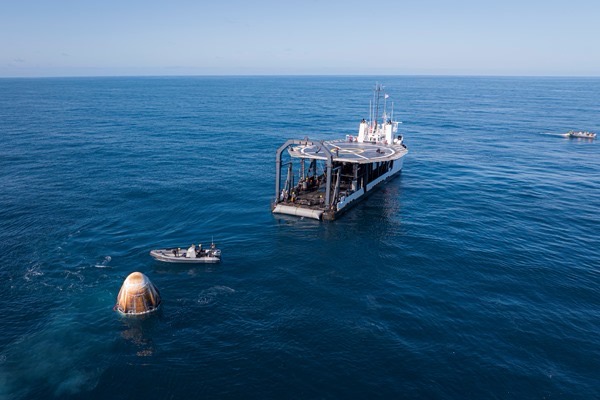First Polar Orbit Spaceflight Successful: Four Astronauts Return to Earth

The approximately four-day polar orbit mission has successfully concluded, with a private team of four civilian space travelers returning safely to Earth aboard SpaceX's Crew Dragon spacecraft on April 4 local time (April 5 Taipei time). The capsule splashed down successfully, marking the first human spaceflight to orbit both the North and South Poles.
The mission, named “Fram2,” was funded and led by Maltese entrepreneur Chun Wang. He was joined by three other members from diverse backgrounds: Norwegian documentary filmmaker Jannicke Mikkelsen, German technology and polar researcher Rabbia Rourke, and Australian explorer and medical officer Eric Phillips.
The four crew members launched on March 31 Eastern Time from NASA’s Kennedy Space Center in Florida, aboard a Falcon 9 rocket that delivered their capsule into a vertical 90-degree polar orbit. During the journey, they passed over polar regions approximately every 40 minutes.
According to the mission briefing, the team conducted 22 experiments during the mission. Research topics included the long-term effects of microgravity on the human body, the first-ever X-ray imaging of the human body in orbit, and attempts to grow fungi in microgravity. All crew members wore wearable devices that continuously monitored sleep quality, stress levels, hormone fluctuations, and blood sugar variations, providing valuable health data for future deep space missions.
On April 4 local time, the Crew Dragon completed its reentry procedure and landed smoothly in the Pacific Ocean. Notably, all four crew members exited the capsule on their own without stretchers or external assistance, indicating good physical recovery. This achievement offers practical validation for self-reliant operations in future missions to the Moon or Mars.
This mission not only marks a milestone in private space exploration but also highlights the potential of commercial spaceflight in polar orbits, space medicine, and autonomous operations. In the future, similar civilian-led initiatives could drive more innovation and international collaboration, further advancing humanity’s exploration of the universe.
- 280 reads
Human Rights
Fostering a More Humane World: The 28th Eurasian Economic Summi

Conscience, Hope, and Action: Keys to Global Peace and Sustainability

Ringing FOWPAL’s Peace Bell for the World:Nobel Peace Prize Laureates’ Visions and Actions

Protecting the World’s Cultural Diversity for a Sustainable Future

Puppet Show I International Friendship Day 2020

